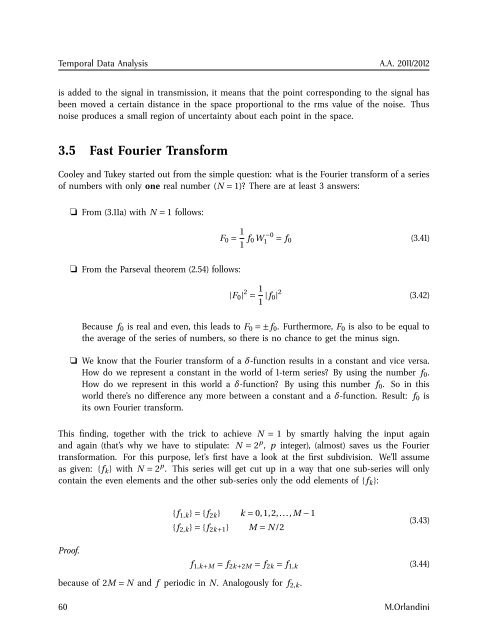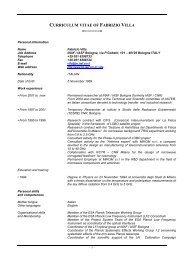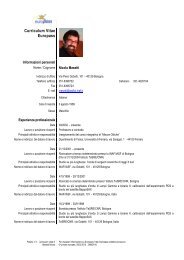booklet format - inaf iasf bologna
booklet format - inaf iasf bologna
booklet format - inaf iasf bologna
Create successful ePaper yourself
Turn your PDF publications into a flip-book with our unique Google optimized e-Paper software.
Temporal Data Analysis A.A. 2011/2012<br />
is added to the signal in transmission, it means that the point corresponding to the signal has<br />
been moved a certain distance in the space proportional to the rms value of the noise. Thus<br />
noise produces a small region of uncertainty about each point in the space.<br />
3.5 Fast Fourier Transform<br />
Cooley and Tukey started out from the simple question: what is the Fourier transform of a series<br />
of numbers with only one real number (N = 1)? There are at least 3 answers:<br />
❏ From (3.11a) with N = 1 follows:<br />
F 0 = 1 1 f 0 W −0<br />
1 = f 0 (3.41)<br />
❏ From the Parseval theorem (2.54) follows:<br />
|F 0 | 2 = 1 1 |f 0| 2 (3.42)<br />
Because f 0 is real and even, this leads to F 0 = ±f 0 . Furthermore, F 0 is also to be equal to<br />
the average of the series of numbers, so there is no chance to get the minus sign.<br />
❏ We know that the Fourier transform of a δ-function results in a constant and vice versa.<br />
How do we represent a constant in the world of 1-term series? By using the number f 0 .<br />
How do we represent in this world a δ-function? By using this number f 0 . So in this<br />
world there’s no difference any more between a constant and a δ-function. Result: f 0 is<br />
its own Fourier transform.<br />
This finding, together with the trick to achieve N = 1 by smartly halving the input again<br />
and again (that’s why we have to stipulate: N = 2 p , p integer), (almost) saves us the Fourier<br />
trans<strong>format</strong>ion. For this purpose, let’s first have a look at the first subdivision. We’ll assume<br />
as given: {f k } with N = 2 p . This series will get cut up in a way that one sub-series will only<br />
contain the even elements and the other sub-series only the odd elements of {f k }:<br />
{f 1,k } = {f 2k } k = 0,1,2,..., M − 1<br />
{f 2,k } = {f 2k+1 } M = N /2<br />
(3.43)<br />
Proof.<br />
f 1,k+M = f 2k+2M = f 2k = f 1,k (3.44)<br />
because of 2M = N and f periodic in N. Analogously for f 2,k .<br />
60 M.Orlandini

















